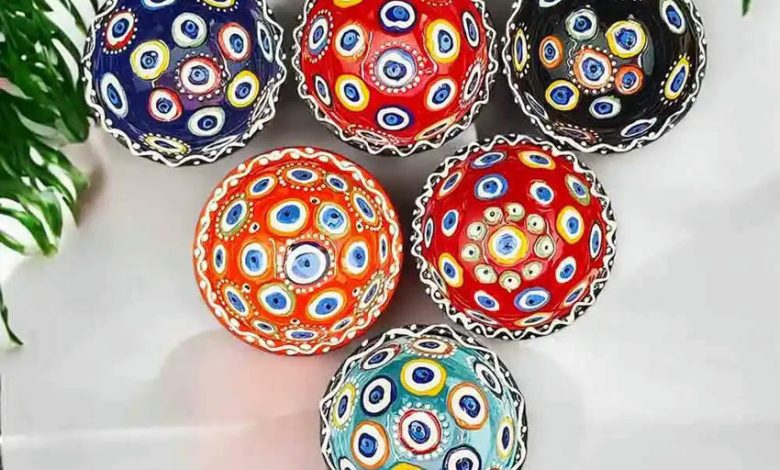Handmade Ceramic

Handmade Ceramic
Handmade ceramics offer a world of beauty and intricacy that is often overlooked in our fast-paced, mass-produced era. These pieces are not just objects; they are stories molded by the hands of skilled artisans, each carrying the whispers of tradition and the breath of innovation. When we delve into the realm of handmade ceramics, we’re not just exploring clay and glaze; we’re journeying through history, culture, and personal expression.
In particular, the ceramics from Anadolu, or Anatolia, present a fascinating blend of modern and traditional products. This region, rich with history, has been a cradle for civilizations that have mastered the art of ceramics over millennia. From the vibrant bazaars of Turkey Once the clay is prepared, the potter begins the shaping process to the quiet studios tucked away in rural villages, Anadolu’s ceramics speak a universal language of beauty and craftsmanship.
The process of creating these ceramics is as mesmerizing as the products themselves. It begins with the careful selection of clay, followed by shaping, glazing, and firing—a sequence that might sound simple but requires years of practice and patience to perfect. Each piece, whether a bowl, a plate, or a decorative tile, tells a unique story. The colors, patterns, and textures reflect the rich tapestry of Anadolu’s culture, blending influences from the East and West, the ancient and the modern.
What truly sets Anadolu’s handmade ceramics apart is their uniqueness. In a world where identical products are mass-produced, these ceramics stand out as singular works of art. No two pieces are exactly alike, each bearing the distinctive touch of its creator. This individuality adds a special value to handmade ceramics, making them not just objects of utility but also of beauty and personal connection.
Exploring the beauty of handmade ceramic from Anadolu offers us a chance to reconnect with the tangible and the tactile in an increasingly virtual world. It’s an invitation to slow down, appreciate the finer details, and cherish the human touch in our belongings. As we hold a handmade ceramic piece, we’re not just holding a product of earth and fire; we’re holding a piece of human history, creativity, and spirit.
Turkish Ceramic
Turkish Ceramics, a splendid fusion of (Anatolia’s modern and traditional products), embody a rich tapestry of history, art, and culture that dates back thousands of years. The journey of Turkish ceramics from their humble beginnings in the Anatolian plains to becoming a globally celebrated art form is nothing short of spectacular.
The art of ceramic making in Turkey is a story of evolution, influenced by various civilizations that thrived in Anatolia throughout history, including the Hittites, Greeks, Romans, and Ottomans. Each era added a new dimension to the craft, blending traditional techniques with modern influences, resulting in a unique and vibrant aesthetic that is distinctly Turkish.
At the heart of Turkish ceramic artistry are the Iznik tiles, renowned for their exquisite designs and bright cobalt blue and turquoise colors. These tiles were not just decorative elements but also held significant cultural and religious importance in Ottoman architecture, adorning the walls of palaces, mosques, and public buildings, narrating stories of the empire’s grandeur.
Today, Turkish ceramics continue to surprise and explode with creativity, as artisans and craftspeople across Anatolia blend traditional methods with contemporary designs. The result is a stunning array of products ranging from functional kitchenware to ornamental art pieces, each telling a unique story of Turkey’s rich cultural heritage.
The process of creating Turkish ceramics is a labor of love, requiring patience, precision, and a deep understanding of the material. From the initial shaping of the clay to the final glaze, each step is meticulously carried out by hand, ensuring that no two pieces are exactly alike. This handmade nature not only adds to the charm and appeal of Turkish ceramics but also makes each piece a collector’s item, cherished for generations.
Ceramic Bowls
The journey of creating a ceramic bowl is a fascinating blend of art, science, and tradition. It begins with the potter selecting the right type of clay. The choice of clay can vary widely, depending on the specific characteristics desired in the final product. For instance, porcelain clay is known for its fine texture and durability, making it a popular choice for creating elegant, high-quality ceramic bowl.
This can be done on a potter’s wheel or through hand-building techniques such as coiling or slab building. The wheel-throwing method is mesmerizing to watch, as a lump of clay transforms into a beautiful bowl right before your eyes. Hand-building, on the other hand, offers a more tactile experience, where the potter’s intimate connection with the clay is evident in the final piece.
After shaping, the bowl must dry to a leather-hard state before the potter can trim and refine the shape. This stage is crucial for ensuring the bowl has a smooth, even surface. Once the bowl is bone dry, it undergoes its first firing in the kiln, known as the bisque firing.
Glazing is where the magic really happens. The choice of glaze not only determines the color and finish of the ceramic bowl but also its texture and feel. Glazes can range from glossy and smooth to matte and rough, offering endless possibilities for customization. After the glaze is applied, the bowl goes through its final firing, which vitrifies the glaze and clay body, ensuring the bowl is waterproof and durable.
The beauty of handmade ceramic bowl lies not just in their functionality but in their ability to bridge the gap between modern and traditional products from Anatolia. Each bowl carries with it a piece of history, a story of craftsmanship passed down through generations. Whether used for daily meals or displayed as a piece of art, these bowls serve as a reminder of the skilled artisans who continue to keep this ancient tradition alive.
